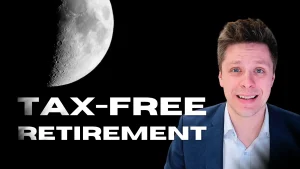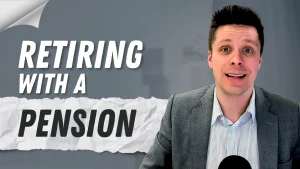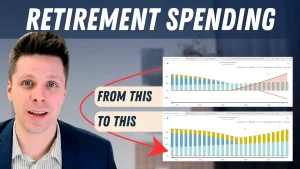You’ve done a good job saving and have a sizeable nest egg set aside in your RRSPs for retirement, but how do you make tax-efficient RRSP withdrawals?
This is the part that most people get wrong and why you hear so many people say they hate RRSPs.
Here are tips for withdrawing from a large RRSP in retirement.
RRSP to RRIF Conversion
Let’s start with the basics. If you withdraw from your RRSP, the amount withdrawn is added to your taxable income for the year. However, if you are retired, no rule says you have to make RRSP withdrawals.
This changes in the year you turn 71. By the end of that year, you will need to convert your RRSP into a RRIF.
Once your money is in a RRIF, you must withdraw the minimum amount the following year.
The amount is based on your age, which will determine the percent amount that needs to be withdrawn from the RRIF.
RRIF Minimum Withdrawal Chart | CIBC Wood Gundy
Since withdrawals from an RRSP or a RRIF are taxable, some retirees will try to defer them as long as they can and live on other sources of income in the meantime.
Rita’s Situation
For example, Rita retired at 60 and wanted to keep her tax bill as low as possible.
When looking at her portfolio, we could see that the majority of her savings were in her RRSP, with some money set aside in her TFSA and non-registered accounts.
To keep her tax bill as low as possible, Rita relied on her Non-Registered and Tax-Free Savings Accounts to fund her retirement.
We can see that her RRSP kept growing over time as no withdrawals were occurring. Eventually, when Rita converted her RRSP to a RRIF, she began making withdrawals.
Without realizing Rita created a couple of issues by implementing this strategy.
Issue #1: Larger Mandated Withdrawals
Since her RRSP had grown, her mandated withdrawals now that the money was in a RRIF were also substantially higher. This was pushing her into a higher tax bracket and could potentially affect some of her government benefits like Old Age Security.
Issue #2: Huge Tax Liability
At the plan’s end, Rita still had 1.67 million dollars left in her RRIF.
Upon death, this entire amount would be added to her final tax return.
Assuming Rita was an Ontario resident, she’s looking at a tax bill of over 53.5% on the majority of her RRIF.
TaxTips.ca – Ontario 2023 & 2024 Tax Rates & Tax Brackets
Had Rita passed away sooner, her tax bill would’ve been even higher as her RRIF was worth more.
After factoring in taxes, Rita was left with an estate after tax of $798k.
Tax-Efficient Withdrawals
Rather than waiting to make RRSP withdrawals, Rita would have been better off making withdrawals much sooner to smooth out her income over her retirement.
How do we know how much to withdraw? $20,000, $50,000, $100,000?
In this scenario, Rita should have been targeting an income of $84,000 per year. To generate this sort of income, she would need to draw on her RRSPs as soon as she retired.
As we can see, by the plan’s end, Rita’s RRSPs have all been used up, and she’s left with her TFSA and non-registered account, which are going to be a lot more tax-efficient.
The result
By implementing this one simple change, Rita is able to leave an estate of $1.21M. That’s over $400k more than her current plan.
You might be saying that’s great, Marc, but I have no intention of leaving such a large estate.
That’s fine, but having a sound retirement withdrawal strategy means that you’ll pay less taxes throughout your retirement, allowing you to spend more of your own money.
A Personalized Approach to Retirement Planning
I hope you enjoyed these RRSP withdrawals tips. If you are looking for tips for your specific situation, click here to access our retirement withdrawal questionnaire.
It takes just five minutes, and you’ll receive a personalized video from me with strategies tailored to your unique situation.





